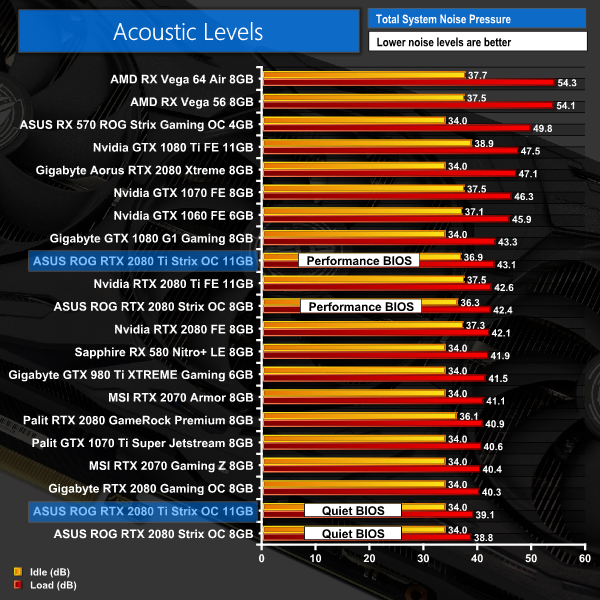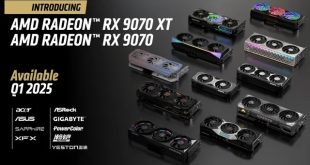We take our noise measurements with the sound meter positioned 1 foot from the graphics card. I measured the sound floor to be 34 dBA, thus anything above this level can be attributed to the graphics cards. The power supply is passive for the entire power output range we tested all graphics cards in, while all CPU and system fans were disabled.
A reading under load comes from running the 3DMark Fire Strike Ultra stress test 20 times. An idle reading comes after leaving the system on the Windows desktop for 30 minutes.
As we mentioned, the performance BIOS does run the fans slightly louder – with a peak of 43.1dB. It's certainly not loud, but it is 2-3dB louder than other aftermarket RTX cards we have seen over the last few weeks.
The quiet BIOS, however, peaked at just 39.1dB, making it essentially inaudible – I could only hear it if I pressed my ear within a couple of inches of the card itself. Bearing in mind that we tested with an open-air test bench, too – once the card is in a case, you simply would not be able to hear it at all.
This difference in fan curve is clearly demonstrated by the average fan speed taken during the 20 runs of Fire Strike Ultra. The performance BIOS, for instance, ran the fans at 1600rpm, whereas the quiet BIOS ran the fans much slower at 1075rpm.
 KitGuru KitGuru.net – Tech News | Hardware News | Hardware Reviews | IOS | Mobile | Gaming | Graphics Cards
KitGuru KitGuru.net – Tech News | Hardware News | Hardware Reviews | IOS | Mobile | Gaming | Graphics Cards



